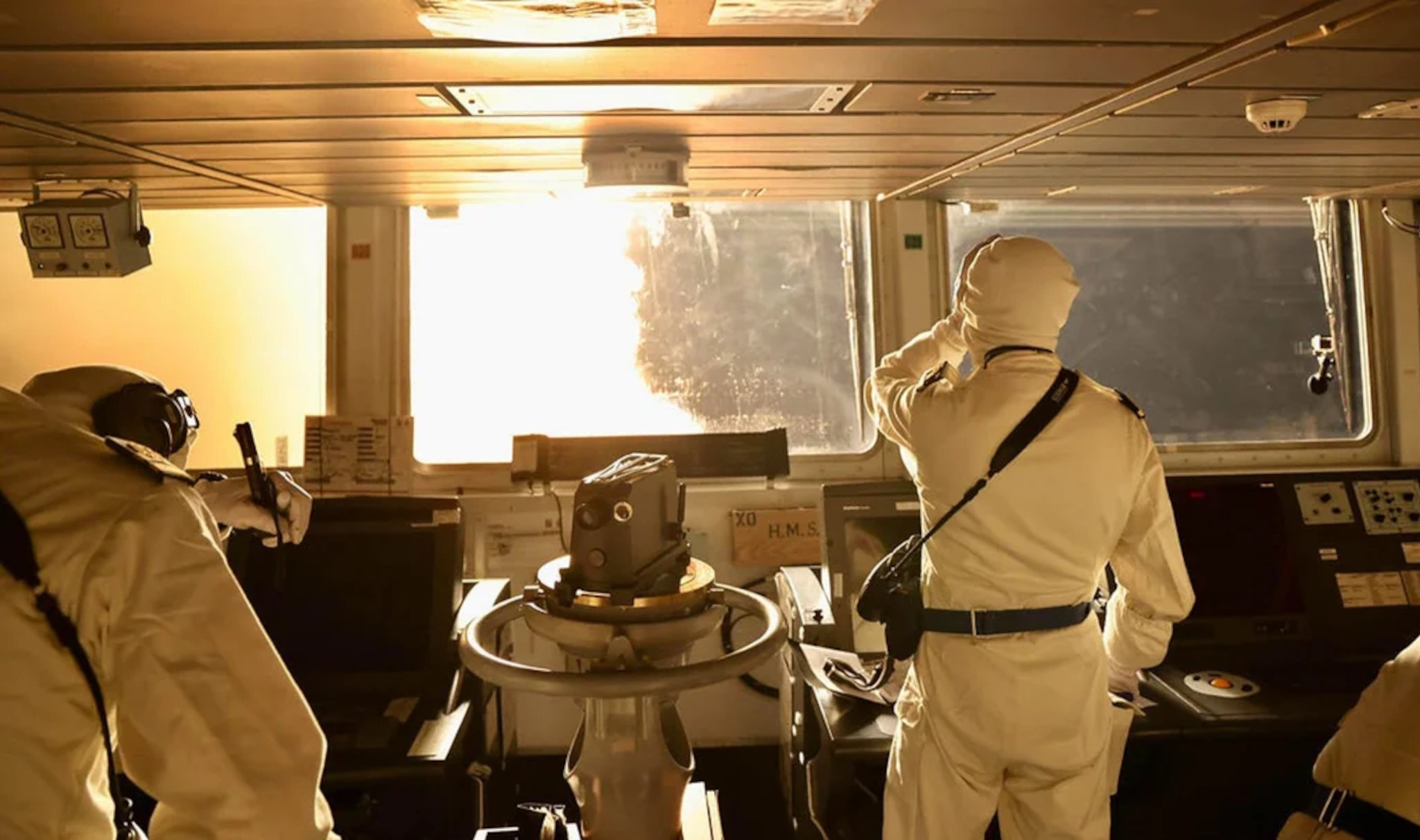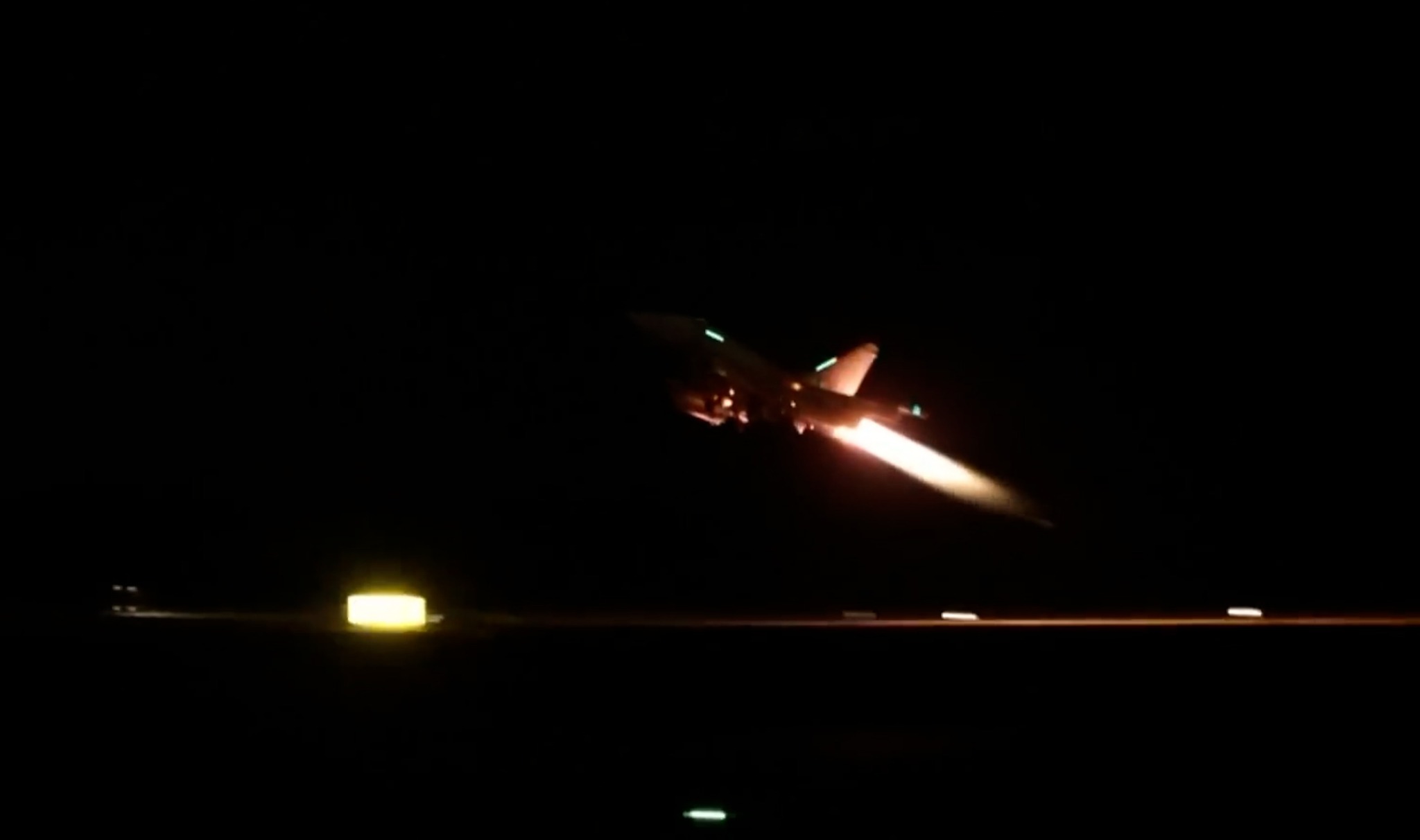Rishi Sunak’s war with Yemen has already cost the British public up to £19m in missile costs alone, research by Declassified UK has found.
As many as 53 missiles, some costing over a million pounds each, have been fired by the Royal Navy and Air Force.
The military mission, which has not been voted on in parliament, continues to grow despite signs it is failing to achieve core objectives.
Instead of making the Red Sea safer for shipping, it has put British-linked trade vessels directly in the sights of the Houthis, resulting in the catastrophic sinking of the Rubymar, a UK-owned bulk carrier.
The Houthis, which are Yemen’s de-facto government with control of the capital and majority of the population, say their blockade is meant to stop Israel’s genocide in Gaza.
More than 30,000 Palestinians, mostly women and children, have been killed by Israel in the last five months.
Prior to Sunak ordering air strikes on Yemen, only one British flagged merchant vessel had been hit by the Houthis. That was the Cayman Islands flagged Swan Atlantic, which the Houthis mistakenly believed was managed by an Israeli firm.
However, escalation in the Red Sea provides a long-awaited chance for the British military to test its capabilities against the Houthis’ Iranian-designed drones, ahead of a potential war with Tehran. It is also a boon for Britain’s arms industry.
Classified as secret
The true cost of Sunak’s Yemen war is currently classified as secret and will only be published when the Ministry of Defence (MoD) releases its annual accounts in July.
Defence secretary Grant Shapps, who ridiculed the Houthis’ “absurd claims to be the Robin Hood of Yemen”, is in fact being forced to borrow money from other government departments to pay for the war.
Shapps is drawing on the Treasury’s Contingencies Fund, having “requested funding from the Special Reserve for [the] Red Sea”.
Kenny MacAskill, an Alba MP for East Lothian who has grilled ministers on the conflict, told Declassified: “There’s always money to wage war abroad and never funds to fight poverty at home.
“The economic cost to us of launching air strikes against some of the poorest people on the planet compounds the environmental damage to our planet of flying thousands of miles to do so.
“Meanwhile, folk here go hungry and our planet burns. The elite are enriched but the rest pay the price.”
Counting the cost
The Royal Air Force (RAF) has struck 40 targets across Yemen in four waves of air strikes since January, according to statements made by Shapps in parliament.
The targets were hit by Paveway IV missiles, which cost around £70,000 each in 2014. With inflation, the missiles may now cost more.
Firing 40 of those missiles will have cost approximately £2.8m, assuming one missile was used per target. The MoD refuses to clarify the number or cost of munitions used.
There are additional costs involved in flying the fleet of four Typhoons thousands of miles from a base on Cyprus, and conducting aerial refuelling twice per mission by Voyager tankers.
Each aircraft costs thousands of pounds per hour to operate.
At sea, the Royal Navy is racking up an even larger bill. The destroyer HMS Diamond began shooting down Houthi drones on 16 December using Sea Viper missiles that cost at least £1m each.
“The MoD refuses to clarify the number or cost of munitions used”
Diamond fired between three and eight Sea Vipers during a trio of engagements in December and January, adding £3-8m to the cost of Operation Prosperity Guardian.
Diamond was replaced in February by a frigate, HMS Richmond, which shot down two Houthi drones on 9 March.
A video released by the MoD appeared to show the ship firing four Sea Ceptor missiles.
The cost of these missiles is not in the public domain. Some arms industry publications suggest they are cheaper than Sea Viper. However our research indicates they might be more expensive.
The Royal Navy announced in 2018 that it had installed Sea Ceptors across its fleet of Type 23 frigates at a cost of £850m.
At that time, the navy had 13 of those frigates, each with silos for 32 Sea Ceptors. At least 416 missiles would have been needed to furnish the fleet, plus spares for testing and replenishment.
This would suggest Sea Ceptors cost around £2m each. If Richmond fired four, then it would have cost £8m. The MoD refused to provide clarity when asked by Declassified.
The drones and missiles developed by the Houthis are believed to be far cheaper than the British weapons used to destroy them.
In total, the munitions Britain has fired at the Houthis since December may have cost up to £19m.
Stocks and shares
What is clear is that arms companies stand to benefit. Sea Vipers and Ceptors are made by MBDA, a consortium of Britain’s BAE Systems, France’s Airbus and Italy’s Leonardo.
Paveways are manufactured by Raytheon, a US arms giant. Raytheon and BAE have both seen their share prices rise by around a third since 7 October.
MBDA announced last week its order book was at a record high, at almost €10bn.
The group has directly benefited from the war in the Red Sea. The Royal Navy agreed in January to new contracts worth £405m to upgrade the Sea Viper system on destroyers like Diamond.
This conflict is the first time the navy has shot down an aerial target in anger since the Gulf war in 1991, with Viper and Ceptor both proving successful.
Apparently Viper already needs upgrading so the navy can shoot down anti-ship ballistic missiles (ASBMs), and not just drones or short range missiles used by the Houthis.
Currently, the UK relies on sailing with allies like the US whose navy does have an anti-ASBM capability.
Rearming
The conflict with Yemen has reduced missile inventories. After shooting down nine Houthi drones using a mixture of Vipers and her canon, Diamond sailed 3,000 miles from the Red Sea to Gibraltar.
There, she was photographed having new Sea Vipers craned into her silos last month.
Gibraltar was chosen despite the navy investing in controversial bases in Oman and Bahrain, two Arab autocracies.
Ministers may have felt it was too provocative to rearm Diamond in the Gulf, where Britain’s support for Israel is deeply unpopular among the public.
UK military personnel have already been confronted inside a mess facility in Duqm, Oman, over Britain’s backing of Benjamin Netanyahu.
Industry publication Navy Lookout said the decision not to rearm in Oman “may seem surprising” but explained: “The main reason is that Diamond needed to embark more Sea Viper missiles which have to be stored securely and handled by experts, ideally on British territory.
“This is not something that can be easily done in Oman and Gib[raltar] has underground weapon storage facilities…suitable for holding stocks of these expensive and sensitive weapons.
“In mid-December, the MoD had already anticipated this requirement and delivered a couple of batches of Sea Vipers to Gib from the UK”.
Sunak is Britain’s ninth prime minister to use the RAF to bomb Yemen.
International law expert professor Stefan Talmon has questioned the UK government’s legal justification for the air strikes, accusing ministers of stretching the definition of self-defence.




